A culinary imponderable: The Scottish aversion to pork, featuring a vivisection of ‘The Riddle of the Scottish Pig’ by Eric Ross.
1. No pork please, we’re Scottish.
Alone among the peoples of northern Europe, the Scots historically harbored a deep aversion to eating pork. Even sausages seldom contained it. Unique to Scotland, beef has been the prevalent filling. The cultural idiosyncrasy persisted into the twentieth century, particularly in the Highlands. Donald Mackenzie noted his own aversion in 1935:
“The writer must confess to being one of those who prefer not to eat pork in any form, but for no other reason than an inherited prejudice such as Englishmen, as well as Scotsmen, entertain towards a diet of horse flesh.” (D. Mackenzie n.p.)
He was hardly alone. While conceding that the “prejudice is now of more tardy survival in rural areas than in cities,” Mackenzie contended that “[t]here are still thousands of Highlanders and groups of Lowlanders who refuse to keep pigs or partake of their flesh.” Things were changing, but slowly, at least in the Highlands: “The rising generation eat ham or bacon, but fresh pork is not very popular.” (D. Mackenzie n.p.)
Three years earlier, the distinguished culinary historian F. Marian McNeil had written:
“If Scotland excels in the curing of fish, England excels in the curing of bacon. Ireland, too, is far ahead of Scotland, where in Ayrshire alone there is a serious attempt to surmount the national disability.” (McNeil 106)
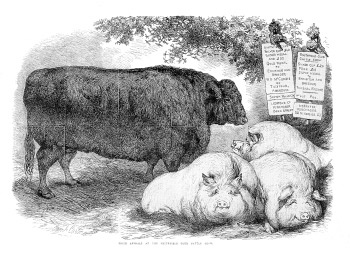 Yes to one, no to the other.
Yes to one, no to the other.
Mackenzie himself was no wildling encumbered with anti-intellectual superstition. During 1920 he delivered a lecture on the historical refusal of Scots to eat pork at the Celtic Congress in Edinburgh and followed that up in 1935 with his engaging and detailed Scottish Folk-Lore and Folk Life: Studies in Race, Culture and Tradition.
Along with any number of historians, travelers to Scotland, anthropologists and sociologists, the anomaly perplexed him. A sixteenth century history of Scotland notes that “our cuntrie people” took “lytle pleasure” from eating pork. (W.M. Mackenzie citing Leslie)
Ben Jonson alluded to something similar, and did not confine the observation to Scots in Scotland. In A Masque of the Metaphorphosed Gipsies , one of them reassures James I, who had been James VI of Scotland before uniting the crowns, that he will have “no part of a swine” and another one barred “grunters” from the presence of the king. (Jonson 372, 380)
An early nineteenth century editor of Jonson’s work notes that the prohibition was “a side compliment to the king, who hated pork in all its varieties.” Elsewhere he adds two prejudices to the monarch’s documented hatred of smoking: “Three things to which James had a great dislike, and with which he said he would treat the Devil were he to invite him to dinner, were a pig, a poll of ling with mustard, and a pipe of tobacco for digesture.” (Gifford 380n, 420n)
Seventeeth century English sources other than Jonson reflect the Scottish anomaly. A popular song written at some point before 1662, The Brewer , includes the verse:
“The Jewish Scots that scorns [sic] to eat
The Flesh of swine, and Brewers beat,
‘Twas the sight of this Hogs-head made ‘em retreat
Which nobody can deny. ” ( A Collection vol. I, 228)
A letter to the Athenian Mercury of London during 1691 asked “Why do Scotchmen hate swine’s flesh?” (Dalyell 425)
In 1730 Edward Burt, a captain in the British army, explained to a friend in London, “[p]ork is not very common with us, but what we have is good…. ” and the editor of his letters notes that “[t]he aversion of many of the Scots, both in the Highlands and Lowlands, to eating pork had nothing superstitious about it…. ” (Burt 6th letter, 6th letter n)
Dr. Johnson saw the same thing during his journey with Boswell to Scotland.
“The vulgar inhabitants of Sky [sic], I know not whether of the other islands, have not only eels but pork and bacon in abhorrence; and accordingly I neer saw a hog in the Hebrides , except one at Dunvegan .” ( Journey 144)
Johnson includes few references to food in his journal of the journey, and remarks only on what he found striking or anomalous. He hardly was known for inaccuracy, so we should trust his observation.
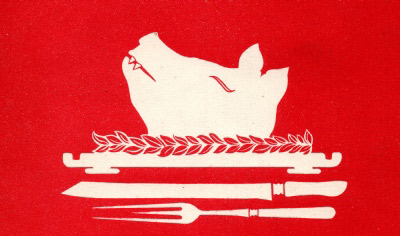
2. Devilish doings.
Pigs were so uncommon in the Borders that crowds mistook them for the devil and fled in fear when they encountered the animal. During one episode in Carlavroc in 1724, “[t]he whole crowd ran some one way and some another; some reached the house tops, and others shut themselves in barns and byres.” A schoolmaster grabbed sword and bible to confront the demon but it “started up at his back and gave a loud grumph, which put him into such a fright that his hair stood upright on his head, and he was obliged to be carried from the field half dead.” (Mackenzie n.p.; Henderson 11-18)
Highland folklore put the devil in the shape of a pig and referred to him as such, “The Big Black Pig.” “He was,” Mackenzie wryly notes, “in the habit of visiting young people who played cards.” (Campbell 17; Mackenzie n.p.) Folklore from the Borders also equated the devil with swine. F. Marian McNeill refers to a Galloway “grace before meat” that goes:
“Bless the sheep for David’s sake, he herdit sheep himsel’;
Bless the fish for peter’s sake, he gruppit fish himsel’;
Bless the soo for Satan’s sake, he was yince a soo himsel’.”
It is no wonder that Sinclair’s comprehensive Statistical Account of Scotland refers to the “deep-rooted prejudice” in Larne along with “a superstitious prejudice against swine” and “utmost detestation” in Lanarkshire. Two other contributors also commented on the taboo in their parishes. (Sinclair vol. VI, 177; vol. VII, ??)

Nineteenth century references proliferate in travel accounts like these, as well as in scholarship and fiction. Robert Henderson, who recorded the terror at Carlavroc, wrote A Treatise on the Breeding of Swine during 1811 in an effort to erase the refusal of Scots to eat pork and convince them to raise pigs for profit instead.
His campaign proved of limited success. In 1835, Marjory McEwen wrote in her Elements of the Arts of Cookery that in “Scotland we do not manage pork well,” adding: “Servants will seldom touch it.” (McNeill 40n)
Fear of pigs was by no means isolated. Dean Ramsay finds that the aversion had abated before 1874 but observes that “the lower orders” in Fife formerly had displayed “a great horror of swine… till very recently.” (Ramsay chapter II, n.p.) Ramsay, J.M. M’Bain and Walter Gregor found the same attitude in fishing communities at Arbroath, Auchmithie, Caithness, Newhaven and elsewhere. (Ramsay chapter II, n.p.; M’Bain 75-76; Gregor 129)
3. Icons weigh in.
Sir Walter Scott and his circle believed that a refusal to eat pork had been rife throughout eighteenth century Scotland and remained the case in the Highlands during the nineteenth. Scott himself returned to the theme repeatedly, with references in three of his novels.
As he explains in a note to The Fortunes of Nigel , “[t]he Scots (Lowlanders) till within the last generation disliked swine’s flesh as an article of food as much as the Highlanders do at present.” In a passage from the text itself, an English character says “the Scots never eat pork--strange that!” A Scottish character from The Two Drovers curses the English as “swine-eaters, who know neither decency nor civility!”
References also appear in Rob Roy and Waverly , where a note to Chapter 20 discusses the Scots dislike of pork. “Pork or swine’s flesh, in any shape, was, till late of years, much abominated by the Scotch, nor is it yet a favourite food amongst them.”
Christian Isobel Johnstone, the incomparable author, in 1826, of A Cook and Housewife’s Manual “by Meg Dods,” one of Scott’s characters, alludes repeatedly to pork in comically unfavorable terms. At one point she ascribes the more terrifying of Fuselli’s sublime images to his “supping on about three pounds of half-dressed pork chops.” (‘Dods’ 121n) On the subject of pork stock, she comments that “[t]he idea was nauseous to all but an English member of a fictitious Scottish dining club. (‘Dods’ 88n) It may be safe to infer that the Scottish reluctance to eat pork lasted until Mrs. Johnstone’s time based on a statistical observation: Only four dishes made with fresh pork appear in her book of over a thousand recipes.
4. That pig will kill us all.
The fear associated with pork could reach an absurd level. As late as the end of the nineteenth century, fishermen on the northeastern coast of Scotland feared that the bite of a pig was “impossible or next to impossible to cure and was supposed to produce cancer.” (Gregor 129)
In 1935, Donald Mackenzie said of Highlanders that their “belief was, until recently, widespread that if one ate pork one would contract some horrible disease like leprocy.” (D. Mackenzie n.p.)
Oddly enough, none of the accounts apparently includes concern about trichinosis, a disease it was in fact possible to contract from the consumption of pork.
5. Rounding up the usual suspects.
Well into the twentieth century writers have ascribed the Scots dislike of pork to religion, always a reliable source of corrosive prejudice and prohibition. The gourmand and food writer Victor MacClure, in 1955, ascribed the proscription of pork to the “national study of the old Testament, following on the Reformation.” Literalist Bible readings “led to general avoidance of those foods forbidden in the Pentateuch.” He explains:
“I cannot remember either in my youth or in any of my revisits to Scotland, ever having tasted fresh pork…. I have a feeling my father never felt easy about having on the table the meat of any beast not walking on the cloven hoof. Certainly he would touch neither mackerel, nor eel, nor any of the rays. They were without scales, and therefore unclean.” (MacClure 67, 66)
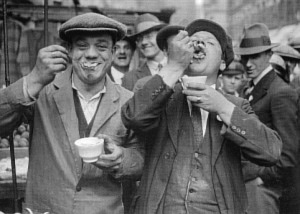
Eating jellied eels, but in England.
MacClure’s father was not alone in refusing to eat eel; English travelers in Scotland, like Dr. Johnson and Captain Burt, frequently remarked about the Scots shunning eels at least as early as the seventeenth century.
The Old Testament explanation for a taboo on pork recurs with some regularity up until MacClure’s time, as the phrase “Jewish Scots ” in the verse from “The Brewer” indicates. Dalyell thought in 1834 that although the “prejudice” against pork was “unsatisfactorily answered” the Scots “might borrow it of the Jews.” (Dalyell 425) In The Fortunes of Nigel , Scott also has a character note that because Scots never eat pork “[s]ome folk think they are a sort of Jews.”
For his part Dean Ramsay recalled “an old Scottish gentleman, who shared this horror, asking very gravely, ‘Were not swine forbidden under the law and cursed under the gospel?’” This from his Reminiscences , published in 1874. (Ramsay chapter II) While Annette Hope notes “Scots attitudes to pigs and pork have always puzzled researchers,” the “Bible was certainly an influence, exerting pressures on communities like the fishing villages, where pigs, together with women and ministers, were regarded with deeply superstitious dread.” (Hope 153)
6. A cult across two seas.
Donald Mackenzie sought an explanation for the aversion and also found it in religion. For a change, however, the fault lies with neither Bible nor Koran but rather with an obscure cult from, of all places, the Turkish high plateau. Mackenzie discovered the “cult of Attis” and uncovered its proscription of pork (a boar had martyred the demigod). By the fourth century BCE, “the Celtic Galatae, who intruded in Anatolia,” had adopted the cult “and its food taboo” and therefore “ceased… to eat pork.” (D. Mackenzie n.p.)
Unfortunately the vehicles Mackenzie has chosen to transport the taboo from Anatolia to Caledonia via Galatia suffer mechanical failure along the way. The Spanish intruders to Turkey served as mercenaries and “must have drawn recruits from the western Celtic area;” “Celts and Iberians” both visited Alexander the Great (but not together and along with emissaries from other regions) in Babylon, “a sure indication that the eastern and western Celts cooperated;” as Romans introduced the god Mithra to Sicily, “so may Celtic warriors, returning to their western homes, have introduced from Galatia the religion of Attis” even though no evidence is offered of the cult’s existence there; the “myth of Attis… appears to survive in the Gaelic story of Diarmaid, who met his death in a wild-boar hunt” and, therefore, “[p]robably the elements of the Attis cult, including the pork taboo, were carried to Scotland across the North Sea by Celtic intruders from the Continent.” The only element of the cult with any credible connection to Scotland, however, is the taboo itself. (D. Mackenzie n.p.) This pileup of supposition, speculation and unwarranted assumption occurs during a wild enough ride, but not one that might have terminated there.
Like Mackenzie, F. Marian McNeil thought “the real reason for the taboo” on pork “was of early Celtic origin.” (McNeil 107) She did not, however, ascribe it to Anatolia.
7. In rides Marx, or his surrogate, on a high horse.

Mackenzie’s conclusion demonstrates that imaginative, not to say outlandish, analysis is not confined to modern sociology departments. Others take an equally implausible reductivist approach. Eric Ross styles himself an anthropologist devoted to a theory of “cultural materialism” combined with “evolutionary methodology,” which sounds suspiciously sociological instead.
Ross is no adherent of Edmund Burke: Neither custom nor sentiment intrude on his consciousness. Economics must explain everything, if necessary rammed through the teeth of common sense.
The idea is to conjure universal patterns of behavior that “are neither fortuitous nor inevitably enigmatic, but develop in fairly regular and predictable ways--that… result from recurrent rather than idiosyncratic causal processes and coevolve with the human ecological systems in which they occur.” (Ross 99)
The sequence of argument required to float this leaky vessel will be familiar to anyone who has labored through a Marxist take on Sociology 101. First, recruit a straw man to ‘define’ an argument in favorable but inaccurate terms, then ignore inconvenient evidence to make selective comparison and reach a facile but either unwarranted or fatuous conclusion.
The tone must be militant in its hostility to elitism, even when elites are not much involved, and it is crucial to present the sequence in impenetrably verbose prose, because in this realm obscurity masquerades as erudition. Other requirements of the form include infiltration of the words “bourgeoisie,” “capitalism” and “hegemony.”
Ross has mastered the methodology in “The Riddle of the Scottish Pig” and his manipulation of it is classic. “The example from Scotland,” he scoffs, is merely “an illustration of the tendency for dietary customs to be viewed in unnecessarily obscure terms (especially by outside observers).” Less rigorous scholars than Ross himself,
“even quite recent writers in various disciplines, whose discussions of Scottish history and economy are otherwise particularly insightful, have, when on the subject of the pig, resorted to the hoary and facile view that its negligible appearance in Scotland was the result of ‘an age-old prejudice.’” (Ross 99)
Ross identifies three sources, Smith from 1798, Robertson from 1799 and Findlater from 1802, referring to a “foolish prejudice” or “loathing at swine’s flesh.” They are summarily dismissed as “only the intellectual rationalizations of educated writers, who all too easily found an explanation that a ‘foolish prejudice’ was at work.” (Ross 99) No small irony is implicated in this denigration of educated intellectuals by an extremely theoretical academic like Ross.
After that salvo Ross proceeds in his usual vein:
“This perdurable willingness to accept the inherent irrationality of the status of the pig in Scotland stems in large part from the general tendency to regard dietary patterns as a peculiarly mysterious aspect of cultural life that few expect to have a necessarily coherent relation to the world in which they operate.” (Ross 99)
Scholars other than Ross have, he believes, been fooled by a false anomaly.
“In this case, the view seems to have been reinforced because the situation of the pig in Scotland posed an otherwise intractable riddle by diverging so conspicuously from the role that the animal occupied, not merely in much of Europe, but among other Celtic peoples in Ireland and Wales with whom the Scots otherwise have so much in common.” (Ross 99-100)
The Scots also have, and had, much in common with the English but the addition of England would prove problematical so Ross ignores the country. He attempts to distinguish other Celts from Scotland with three arguments. The first is deforestation; the second, the damage wrought to crops and towns by runaway pigs and the third, predictably, oppression.
8. Look Ma, no trees!

Got Pigs?
Ross states that “deciduous forests represent an excellent natural habitat for pigs in which they can readily and effectively forage on seasonal falls of acorns, beechnuts and the like.” (Ross 100) In other words trees drop nuts and pigs like them; fair enough. Ross then answers the question why pasture instead of pigs characterized the eighteenth century Highlands with the explanation that “the primary emphasis in Highland land usage since 1700 has been increasingly upon pastoral production.” (Ross 104) This, however, simply restates his own question.
To support his argument that deforestation killed the Scottish pig, Ross points to a table. The column “Woods & plantations” sets the percentages of forest in the Four Nations at 1.8% for the Irish Republic, 6.5% for England, 8.4% for Scotland and 8.9% for Wales.
All this is undated, but since the Irish Republic did not exist before DeValera disavowed the Free State, we may infer that the table cannot predate 1937, after the reincarnation of the Scottish pig. The statistics then would be useless.
Assuming the statistics are not useless, it would be difficult to suggest how they support the argument for deforestation. Scotland has about as much forest as Wales, some 23% more forest than England and a whopping four times as much as Ireland, where pigs historically have been plentiful.
Another statistic, one overlooked by Ross if not Annette Hope and others, is the dearth of Scottish recipes using pork. The Cook and Housewife’s Manual written by Christian Isobel Johnstone under the pseudonym ‘Meg Dods’, for example, includes but four recipes for fresh pork among over a thousand other dishes. It is arguably the most important documentation of Scots foodways ever published. Johnstone used the Manual , which first appeared in 1826, as a means of promoting, and to some extent creating, a distinctly Scottish identity. Pork is hardly a prominent component of its culinary side.
Furthermore, people do not primarily keep, and have not necessarily kept, pigs in forests. All but the poorest Irish peasants historically owned a family pig fed on kitchen scraps. They could not have kept them in forests since, pace Ross, the Irish do not have any statistically significant stands of trees.
Ross presents his conclusion as if it were new, but it is not. In a letter to The Scotsman during 1921, another Mackenzie, William Mackay, who did not ignore the evidence of aversion, blamed the “sporadic prejudice” to pork among Scots on economic issues and deforestation. ( Scotsman ) Ross does not cite him.
We may dismiss the second argument because the pig run amok knows no borders and will eat things it is not supposed to eat with equal glee anywhere.
9. The boot of the laird ejects his tenants’ pigs… or maybe not.
That leaves oppression to explain what he considers the absence of the Scottish pig, an argument built on two ropes of sand. First, Ross maintains that raising swine ran against the economic interests of landowners, so lairds forbade their tenants pigs. The tenants, who apparently were retarded in their development of unitary class consciousness and comradeship, unaccountably complied.
Patronizing ‘outsiders’ concocted their theory that the tenants hated the swine they were denied. This was, as Ross argues in establishing the requisite straw man, “more a feature of intellectual interpretation than a demonstrated dimension of Highland culture, as well as undoubtedly being an artifact of the directives of Scottish lairds.” (Ross 104)
At this point it becomes instructive to identify the sources that Ross has decided not to cite. They include all but three of the reports of ‘prejudice,’ ‘aversion,’ ‘disgust’ and even ‘loathing’ associated with eating pork in Scotland, and not just in the Highlands.
Ross has not cited a single source quoted in this essay other than Sinclair’s Statistical Survey , and he does not identify the reports of “deep-rooted,” “superstitious prejudice,” “utmost detestation” and other examples of the aversion to pork recorded in it. Clergymen, not ‘outsiders,’ contributed this information about their parishioners to the Survey . Ross, however, does not address the question whether religion played a role; perhaps, however, he implicitly equates it with superstition.
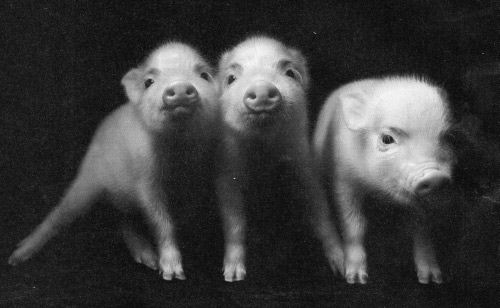
Nor is it at all clear that pigs in fact were absent from Scotland, and even from the Highlands, at the time. Annette Hope concurs with primary sources in concluding that “[p]rejudice … seems to have been most prevalent on the coasts and in parts of the Highlands” during the eighteenth century but as she also points out, “even in the Highlands there were villages where the cottager’s pig was almost part of the family, and might be seen tethered to a leg of the kitchen table.” (Hope 153) So much for the boot of the laird.
Elsewhere Scots disdained people who ate pork but kept pigs too. “In Edinburgh, it was not uncommon for wealthy families to keep a pig in the sty at the stair-foot of a Royal Mile tenement--yet a common 18th century term of contempt for the English was ‘pork-eaters.’” In 1701, an English traveler to the city was tormented by boys shouting “A Pill for the Pork-eaters”--“which happened to be one of the most violently anti-English pamphlets of the day.” (Hope 153)
Hope notes that by 1814 the aversion had waned, but quotes a contemporary source that in Galloway, “although many of the inhabitants still retain a prejudice against eating pork, ‘almost every cottage keeps one, the farmers two or three each and frequently a much greater number.’” Instead of eating the meat from their pigs, the Borders people were curing their pork for the valuable export market. As Hope puts it, ‘[t]he prejudice, that is to say, far from dying out, had gone underground; pigs were still not eaten at home, but they were being reared for commercial gain.” (Hope 153, 154)
10. But don’t we want what we cannot have?
Scarcity promotes desire more often than abhorrence. Items may become luxuries solely because they become hard to get. That explains, for example, the emergence of lobster as a delicacy. In seventeenth and eighteenth century New England, lobster was so plentiful that the contracts of indentured servants, who enjoyed very few real rights, included weekly limits on the number of times they might be served the shellfish. As stocks declined, however, lobster became the luxury item it remains. In a similar fashion, epicures clamor for caviar, truffles and the oyster which, like lobster, once was subsistence fare for the poor.
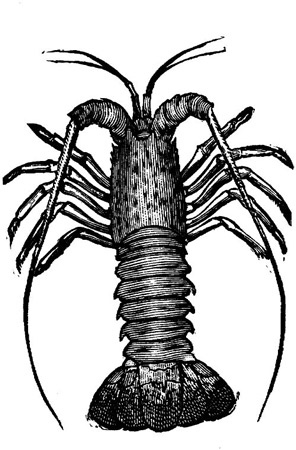
If pigs were scarce in Scotland exclusively for economic reasons, then they ought to have been wreathed in an aura of exclusivity rather than shame. Too many reports of the Scottish aversion to pork, however, inhabit the historical landscape to ignore them as Ross has done.
11. The boot of English capitalism crushes the Scottish pig… or maybe not.
If lairds oppressed tenants, then their behavior ran parallel to the oppression of England by Scotland which, according to Ross, also explains the absence of the pig from the Highlands. The elision of the region with its larger country is no coincidence on his part; agricultural conditions in the Highlands may have been less amenable than elsewhere to rearing pigs (although it was not impossible), so he ignores reports of the stigma attached to swine from the rest of Scotland because it undermines a foundation of his theory.
Ross also ignores incontrovertible evidence from the Highlands. Donald Mackenzie for one cannot be dismissed as an ‘outsider’ unaware of the ‘lower orders’ attitudes: Mackenzie himself openly admits his own cultural aversion to pork and describes how thousands of his Highland neighbors share it.
Following the Act of Union in 1707, according to Ross, “the English bourgeoisie [Bourgeoisie!] consolidated its growing supremacy over the Scottish economy and subordination of the latter to the English market was firmly established. A war economy… called for… large supplies of meat….” (Ross 102)
Military necessity, industrialization and urban growth in England
“impelled an ever-widening network of economic hegemony [There it is too!] by England over its Celtic periphery, creating a complex system of food procurement to sustain the development of English capitalism [!!]…. The Highlands became an ecological component in an evolving British political economy and thenceforward were relegated to a pastoralist and economically backward role.” (Ross 102)
This is fantasy. The record that Scots dislike pork predates the Union; if ‘England’ wanted to exploit Scotland for meat it is difficult to imagine why it must have been beef rather than pork; and cattle production in the Highlands, the most remote and forbidding landscape of mainland Britain, had to have been profitable to the Scots or they would not have bothered with it. Britain lacked any means to coerce landowners to raise anything. The highlands remain “pastoral” and “economically backward” to this day precisely because it is a remote and forbidding region.
Britain, not England or Scotland, ought to be a key concept in this analysis but Ross does not address it. The integration of the two economies is not synonymous with the oppression of one by the other. Instead, the Union brought enormous, if eventual, prosperity to an impoverished Scotland, and Scots would benefit disproportionately from it and from the imperial project.
Edinburgh built its elegant New Town and became a sophisticated banking center.
Glasgow became an industrial powerhouse and great port resembling English cities in its collision of grandeur and squalor. During the eighteenth century the population of Glasgow surged from 19,000 to 114,000 and it would grow further to become second in size only to London among cities in the British Isles. (MacClure 86)
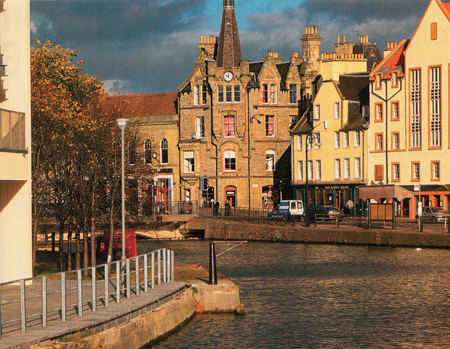
Edinburgh
Smaller cities also grew at an astonishing rate. Dundee, for example, went from 9,000 to 30,000 inhabitants. None of these patterns of rapid urbanization squares with the argument of Ross that England schemed to keep Scotland pastoral and backward. (MacClure 86)
It is debatable at best whether a “bourgeoisie” dominated eighteenth-century England, or whether such a class even existed there. It certainly did not dominate the political nation, made up as it was of magnates and gentry in Parliament, and to a lesser extent courtiers of the Crown. As a proportion of population, a disproportionate number of ministers of state were Scots; they had no motive to impoverish the Scottish sources of their wealth.
And one would have thought ‘ecology’ always has been a component of the Highlands as it is of anywhere else.
10. Back to Burke.
Except in Marxist paradise, culture is messy. It is not composed only of linear or even rational strands, and economics do not account for everything. No econometric explanation exists for the historical eagerness of so many Scots to avoid pork. It is as viable a source of protein as other animals and no more difficult to raise. Based on a comparison with other culinary cultures, in Ireland for example, Germany or the American south, pigs can be less costly than cattle or sheep.
The evolution of foodways is particularly circuitous. There is no reason why Italians embraced pasta when the Spanish did not, or why horsemeat is a delicacy in France and an outrage in England. Dr. Johnson understood the difficulty in determining why some peoples eat some things and others do not. “It is, not very easy,” he mused on the island of Raasay,
“to fix the principles upon which mankind have agreed to eat some animals, and reject others; and as the principle is not evident, it is not uniform. That which is selected as delicate in one country, is by its neighbors abhorred as loathsome. The Neapolitan lately refused to eat potatoes in a famine. An Englishman is not easily persuaded to dine on snails with an Italian, on frogs with a Frenchman, or on horseflesh with a Tartar.” ( Journey 144)
The Irish historically have refused fish or offal in times of scarcity and even famine: Foraged fruit and vegetables, not to mention game, have been denigrated as “famine food.” These attitudes, and the failure to develop a distinctive historical culinary culture, distinguish Ireland from the other nations of the British Isles.
Economics cannot explain the divergence: The refusal to eat plentiful foodstuffs like fish and forage defies all its laws. Nor are conditions, whether geographical, ecological or climatic, all that different in Ireland from the rest of the archipelago. The development of these distinctive mores has not been “regular and predictable:” History is not preordained.
The only explanation for Scottish eccentricity on this score is the one offered by Scots themselves. It is cultural. A strange mix of religious zealotry, folklore, medical misinformation, superstition and scarcity combined on a contingent basis to create the documented Scots aversion to pork. Custom and usage, nothing more nor less, account for the longtime aversion of Scots to pork.
Sources:
Anon., A Collection of Loyal Songs (London 1731)
James Boswell and Samuel Johnson (Ronald Black, ed.), To the Hebrides: Samuel Johnson’s Journey to the Western Islands of Scotland and James Boswell’s Journal of a Tour of the Hebrides (Edinburgh 2007)
Edward Burt, Letters from a Gentleman in the North of Scotland to a Friend in London (London 1818)
John Campbell, Highland Superstitions (Stirling 1901)
John Graham Dalyell, Darker Superstitions of Scotland (Edinburgh 1834)
Walter Gregor, Notes on the Folk-lore of the North-east of Scotland (London 1881)
Robert Henderson, A Treatise on the Breeding of Swine, and Curing of Bacon; with Hints on Agricultural Subjects (Leith 1811)
Annette Hope, Caledonian Feast (London 1989)
Christian Isobel Johnstone, The Cook and Housewife’s Manual by ‘Meg Dods’ (Edinburgh 1826)
Ben Jonson, The Works of Ben Jonson (London 1816) Vol. VII 420
John Leslie, A History of Scotland , tr. James Dalrymple (1596) (Edinburgh 1895)
J. M. M’Bain, Arbroath: Past and Present (Arbroath 1887)
Victor MacClure, Good Appetite My Companion (London 1955)
Scotland’s Inner Man (London 1935)
Donald Mackenzie, Scottish Folk-Lore and Folk Life: Studies in Race, Culture and Tradition (Edinburgh 1935)
William Mackay Mackenzie, Letter to the editor, The Scotsman (8 October 1921)
Marjory McEwen, The Elements of the Arts of Cookery and Confectionary,: According to the Most modern and approved Practice, with Full and Explicit Directions Respecting Killing, Curing and Keeping Meats (Edinburgh 1835)
F. Marian McNeill, The Book of Breakfasts (Edinburgh 1975)
Edward Ramsay, Reminiscences of Scottish Life and Character (Edinburgh 1874), www.gutenberg.org/files/12483/12483-h/12483-h.htm (accessed 7 December 2014)
Eric B. Ross, "The Riddle of the Scottish Pig," BioScience Vol. 33, No. 2 (February 1983) 99-106
Sir John Sinclair (ed.), The Statistical Account of Scotland (Edinburgh 1793)

